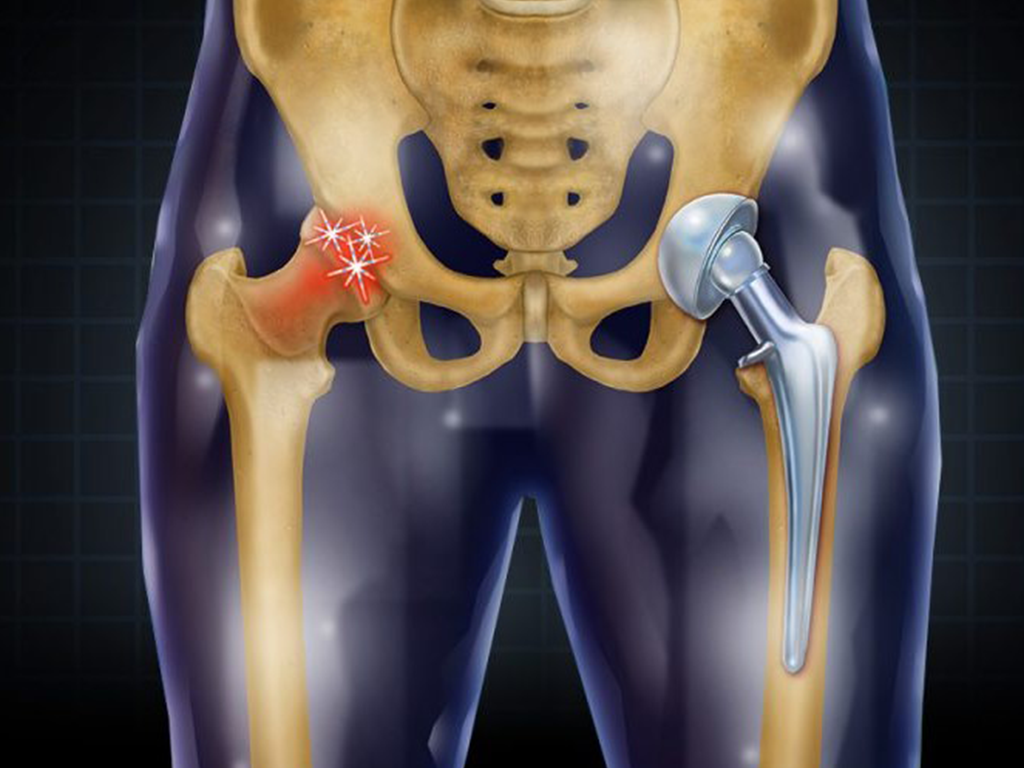The hip joint is the ball and socket joint that involves a ball (femoral head) that fits into the socket (acetabulum). The joint capsule and surrounding soft tissues provide stability to the joint.
Any reconstructive joint surgery that is designed to relieve pain and improve function is referred to as arthroplasty. It encompasses excision, interposition, and replacement arthroplasty. In Total Hip Replacement (THR), both the acetabulum and femoral portions of the joint are replaced with prosthetic components.
Minimally Invasive versus Traditional Arthroplasty
Recent advances in joint replacement procedures that may have a significant impact on the postoperative rehabilitation and outcome are the development of minimally invasive surgeries with less soft tissue disruption than the traditional methods. Although traditional hip arthroplasty procedures have provided excellent results in the past decades, they are ought to impose substantial trauma to the soft tissues (skin, muscles, joint capsule) leading to prolonged recovery and postoperative pain. Compared to the traditional procedures, minimally invasive procedures use smaller skin incisions, less muscle splitting to expose the joint and less capsular destruction.
Minimally Invasive Total Hip Arthroplasty
A minimally invasive THR surgery uses one or two smaller incisions (<10 cms in length) rather than a single longer incision (15-30 cms long) involving extensive muscle splitting. Studies indicate that the patients who underwent minimally invasive THR had less pain, shorter hospital stay, and were better at early mobility.
Materials, Designs and Methods of Fixation
- Prosthetic implants are made up of inert materials such as metal alloys, high-density polyethylene (plastics), and ceramics (sometimes).
- Designs range from
- Resurfacing/ unconstrained (not restricted or limited). These provide no inherent stability.
- Semi constrained
- Articulated/fully constrained. These provide inherent stability.
- Methods of fixation
- Cemented
- Uncemented
- Hybrid
When Is Minimally Invasive Total Hip Arthroplasty Contraindicated?
Despite the excellent functional outcomes after the joint replacement, not every patient is the candidate for an arthroplasty. Although opinions may vary on relative and absolute contraindications, the active infection stays the common concern. Other conditions where THR is contraindicated are:
- Chronic osteomyelitis (infection in the bone).
- Systemic infections.
- Bone loss or malignant tumours that don’t allow an adequate implant fixation.
- Neuropathic conditions.
How Long Does It Take To Recover From A Minimal Invasive THR?
Patients are generally discharged after 1-3 days after the surgery. In-patient physiotherapy is started on the same day. The patient is encouraged and in-bed exercises are started to prevent secondary complications. Most patients can gradually increase their activities in 6-12 weeks.
The patient is advised to continue physiotherapy and visit for regular follow-ups.
Why Choose Sancheti Hospital, Pune for a Minimally Invasive THR?
Sancheti Hospital, Pune is one of the best hospitals for a minimally invasive THR. You should definitely choose Sancheti for its attributes-
- 56 Years Of Experience in Orthopedic and Rehabilitation.
- Use of latest technologies and types of equipment.
- In-patient and Outpatient physiotherapy.
- Hassle-free appointment.








0 comments on “Everything You Need To Know About Minimally Invasive Total Hip Replacement.”